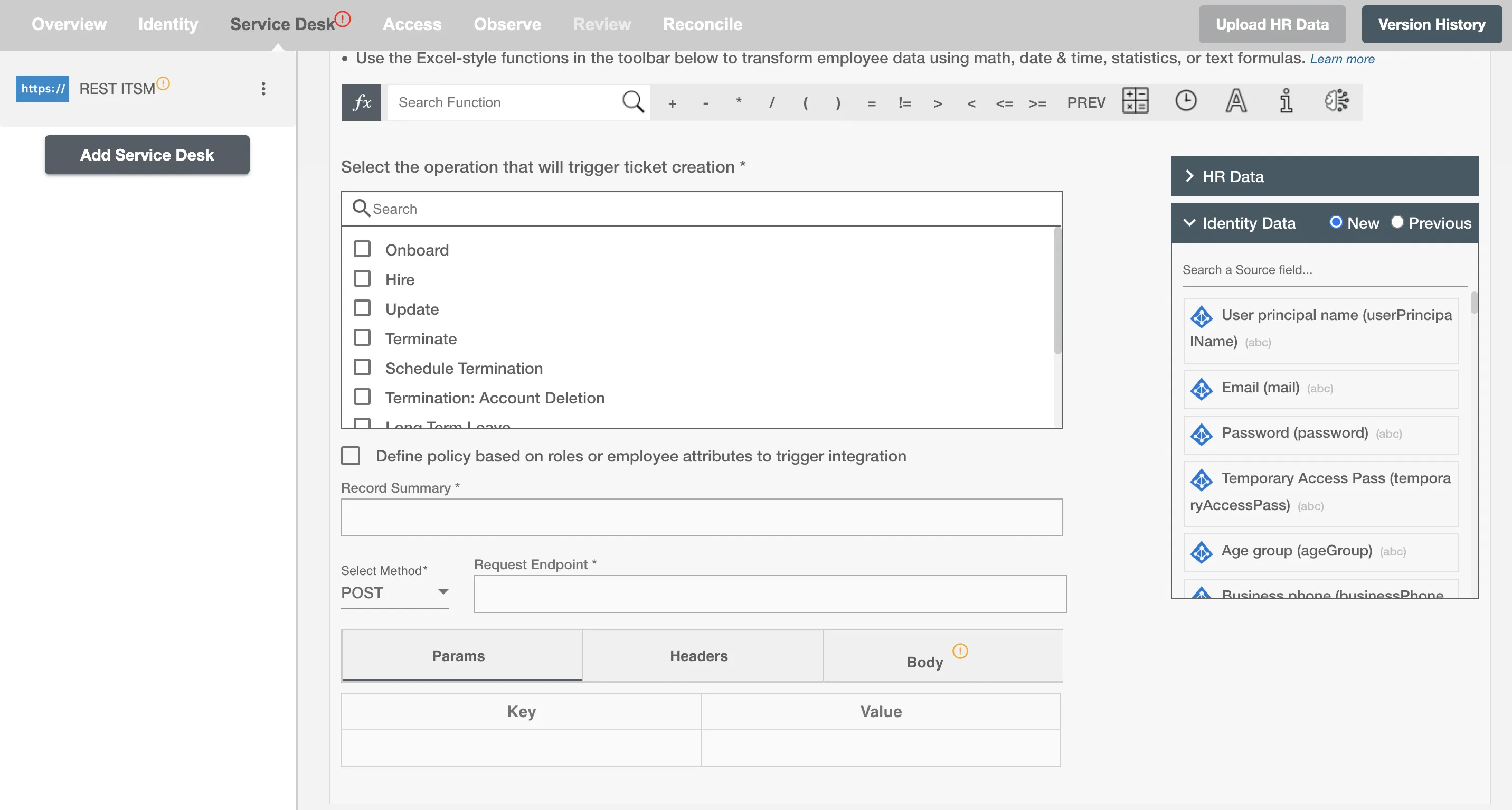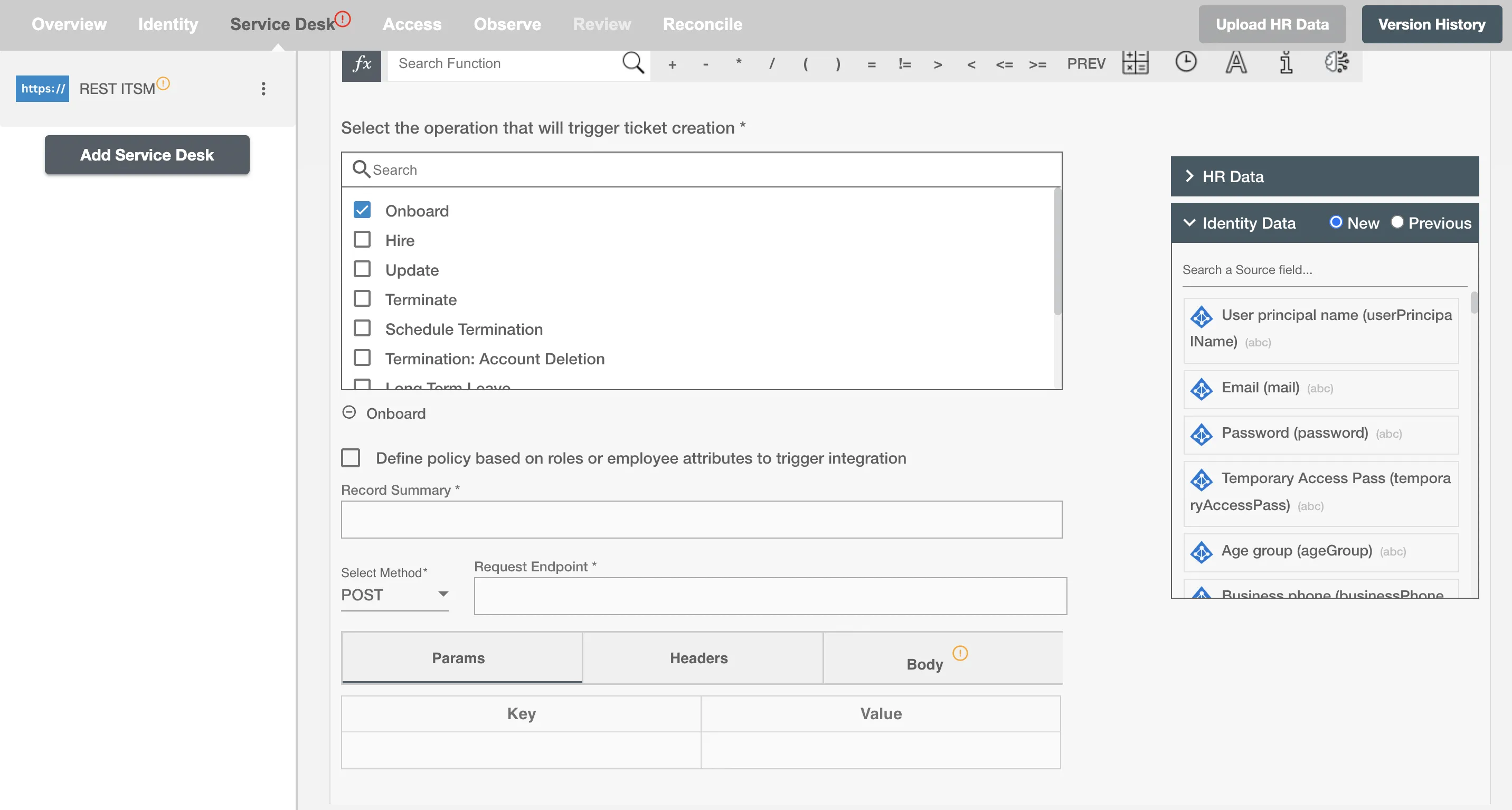Overview
Using the Integration capabilities on Hire2Retire you can create Entities on any Integration software through HTTP REST Connector for various employee lifecycle changes. A REST Connector gives users the flexibility to integrate with any third-party application that supports REST API for integration.

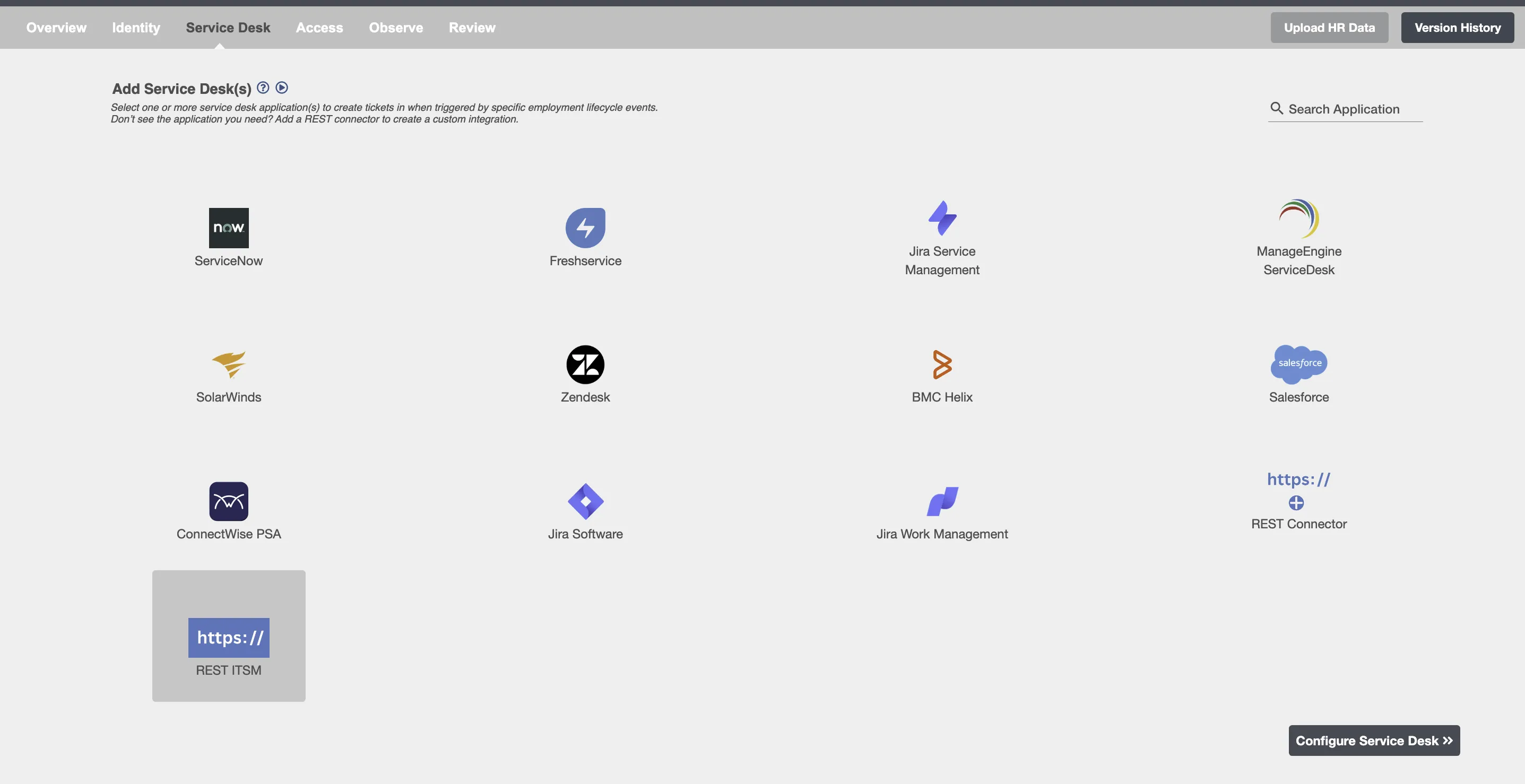
Configuring Entities to be created on ITSM Software¶
Create Entities¶
You can create one or more Entities of any type on each employee lifecycle event. The summary table will show you all the entities configured to be created along with the lifecycle operation for which they will be created.
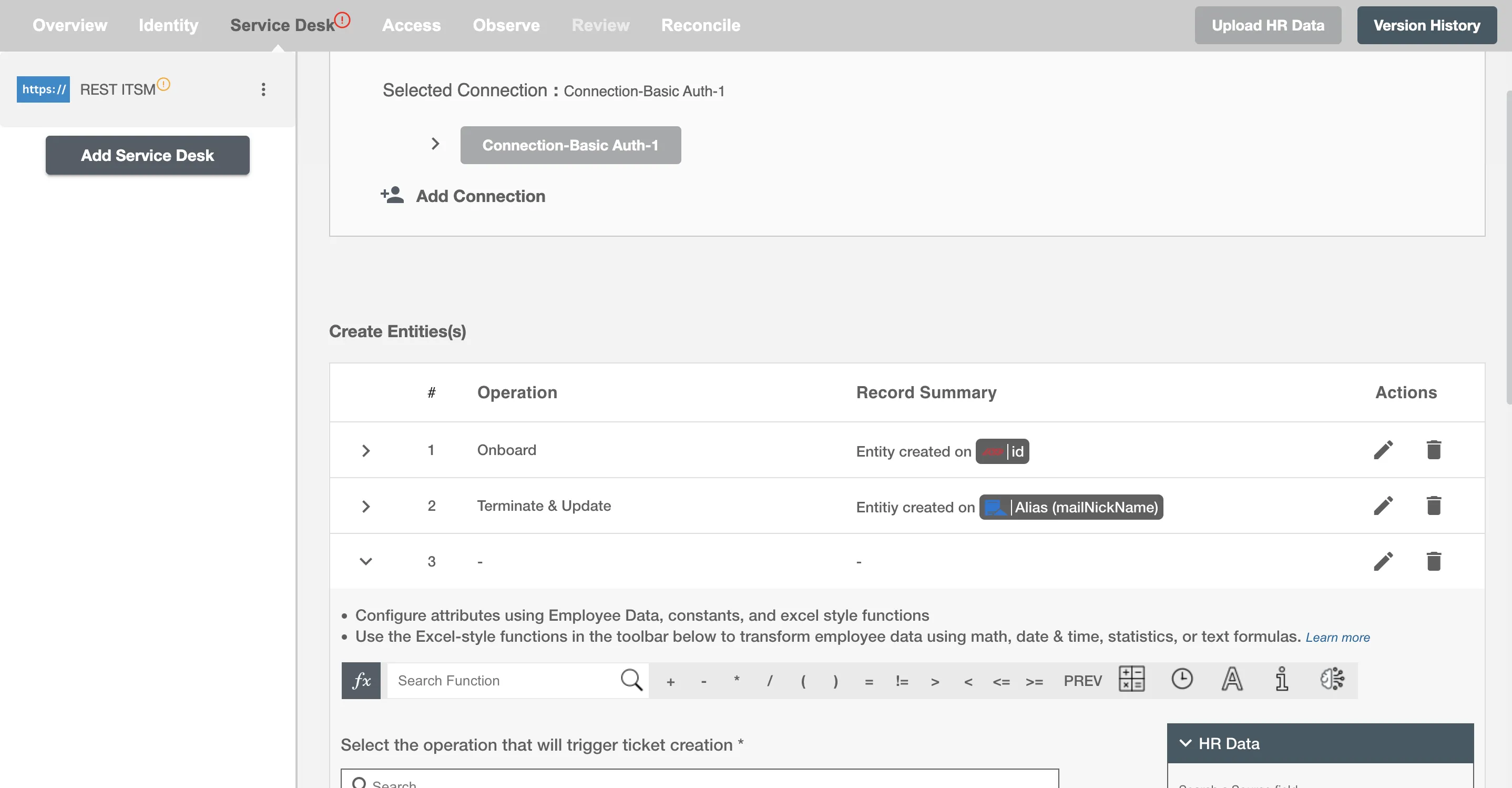
Choose Operation(s)¶
You can create entities in ITSM application on the following Employee Lifecycle operations:
- Hire
- Update
- Terminate
- Long Term Leave
- FMLA Leave
- Legal Leave
- Security and Discipline Leave
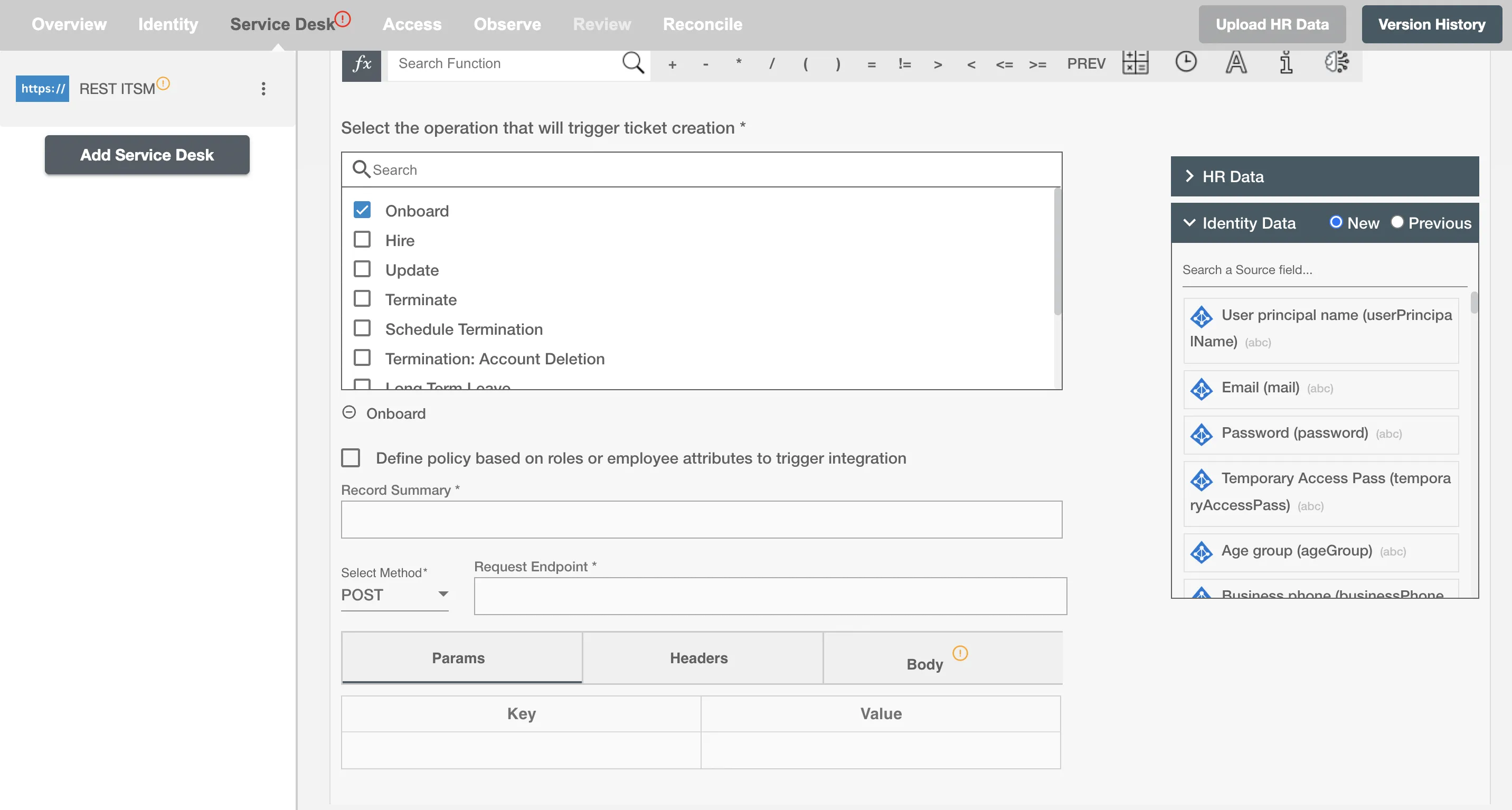
Record Summary¶
Record Summary serves as the primary headline or title of the Entity, providing a snapshot of its content or issue. You can provide a summary for each entity you are configuring, the summary will be visible along with the entity type and operations on the summary table. The entity Summary is not populated on your integration application.
Request URL¶
You can provide endpoint url to create entities in your integration application. You can also select HTTP method for the endpoint url. The request method, by default, is selected as POST.

Request headers, params and body¶
You can add request parameters, headers and request body with HTTP REST Connector. There are tabs avaliable for each section.
Params You can specify query parameters to filter, sort, or specify criteria for the request. These parameters will be added to the request url.
Headers You can provide request headers like Content-Type, etc., in the request headers tab to communicate additional information beyond the URL and request method.
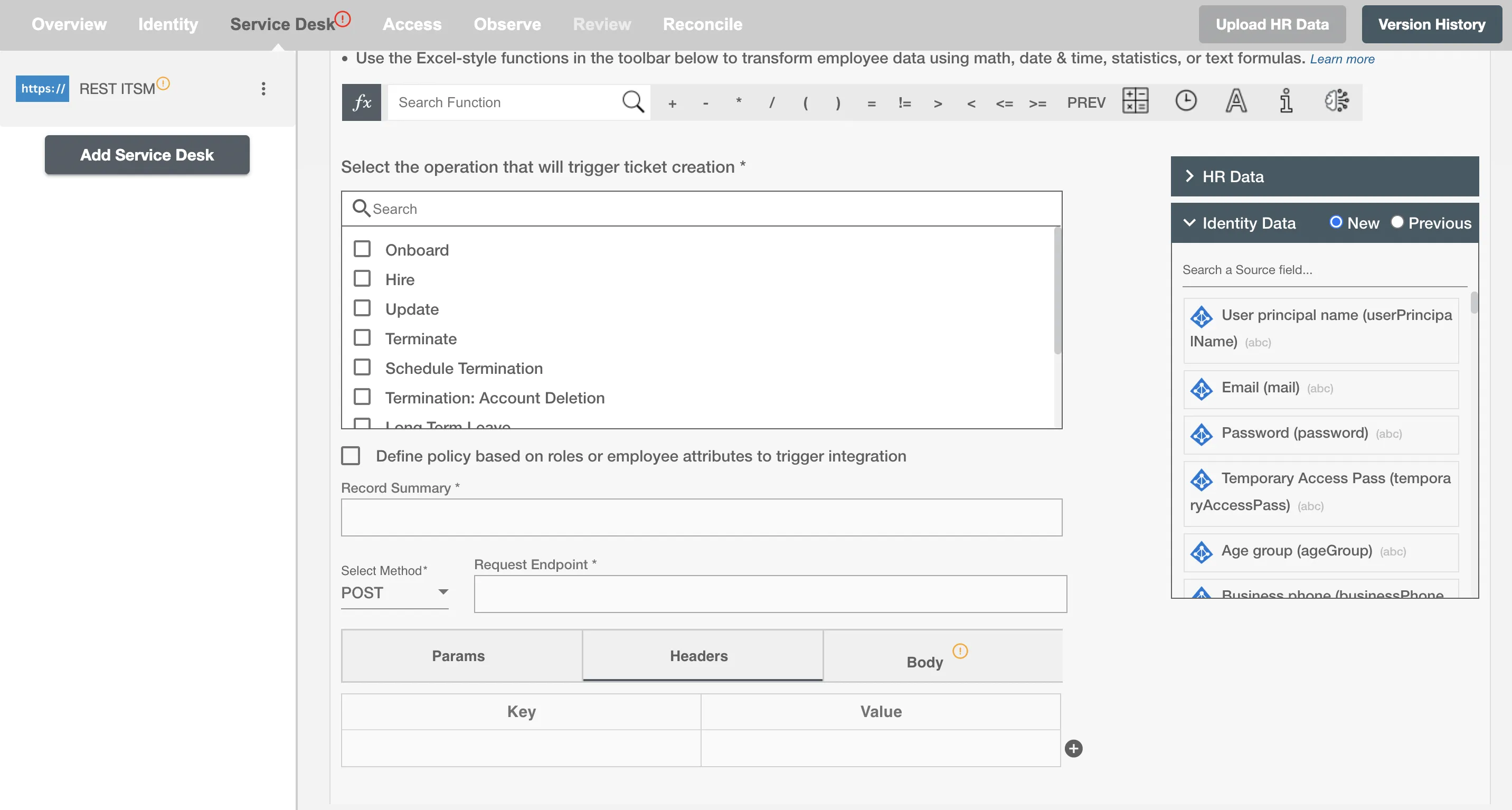
Body Request body gives you space to add the key value pairs in form data or raw JSON object directly. It will create entities on your integration application. You can select the attributes of the entities that you want to populate. You can map values from the AD to populate these attributes. You can also use Hire2Retire's powerful data transformation capabilities using Excel Style functions.

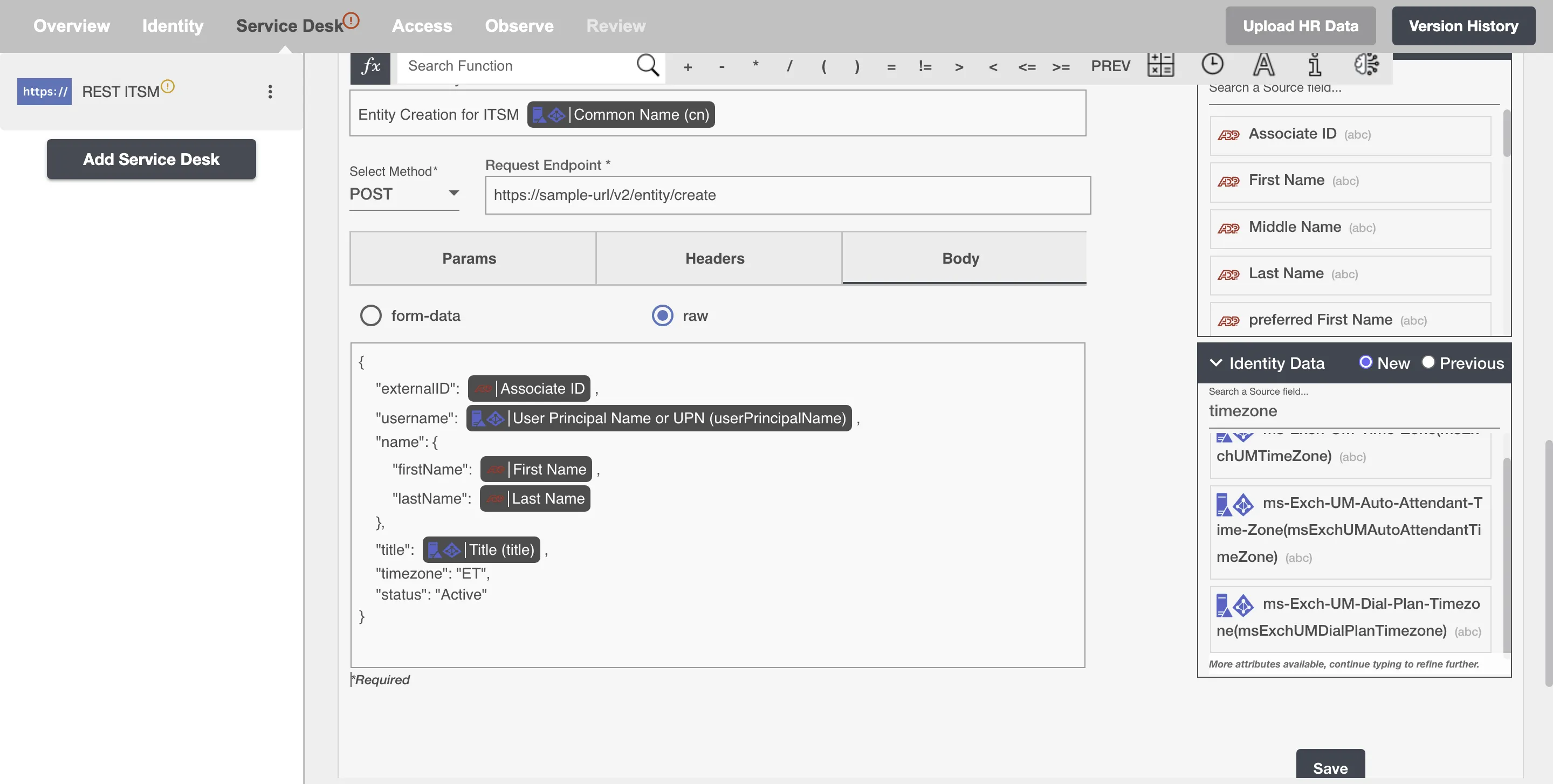
Example¶
Given below is an example to create entity on any integration application using Hire2Retire's HTTP REST Connector. In this example, whenever an employee is onboarded, an entity is created to provision them on an integration application with necessary resources to perform their job, hence the New Hire/Rehire operation is selected.
You can provide the record summary and select the available attributes. After that, you can specify the endpoint URL and the request method. You can also map the values to populate the attributes in the request body. You can also add any additional request parameters or headers using '+' sign. Refer to the example workflow images available below.
